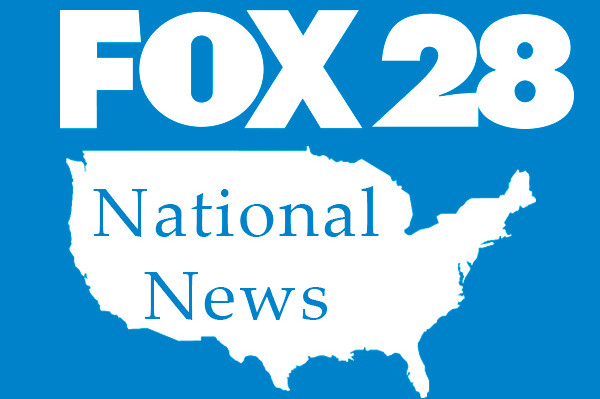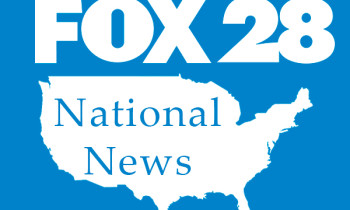
Home insurance costs are soaring nationwide, with average premiums up by 20% between 2021 and 2023 — but costs in some states are rising much faster. As of October, Idaho homeowners have seen a 17% rise in premiums in 2024, according to Insurify’s analysis of home insurance data.
The state’s population increased by nearly 10% between 2019 and 2023, with an influx of new residents from California, Oregon, Washington, and Utah, according to the U.S. Census Bureau. Idaho’s lower cost of living attracts transplants, but rising home insurance costs could significantly dent new residents’ monthly budgets.
Though Idaho homeowners still pay less than the national average for home insurance ($1,918 vs. $2,477 annually), the state’s growing wildfire risk is driving up premiums. Some insurers are non-renewing policies to lower their exposure to catastrophic losses, according to the Idaho Department of Insurance (DOI).
“In the past, consumers had concerns about how an insurer covered a claim. Now the calls are about the increasing premiums or non-renewal of policies,” said Julie Robinson, public information specialist for the Idaho DOI.
Insurify investigated the key factors behind Idaho’s rising home insurance premiums, what homeowners can expect in 2025, and the top ways to save on coverage.
Key Takeaways
Idaho home insurance rates have increased by 17% in 2024 — significantly more than the 3% increase in Utah, despite the states’ similar wildfire challenges. Utah is one of just two western U.S. states with uniformly enforced statewide building codes that specifically address wildfire risk.Meridian, Idaho, and Nampa, Idaho, saw the greatest year-over-year increase in home insurance costs between October 2023 and October 2024, with average premiums surging by 21% in both cities.Idaho has a higher wildfire risk than 96% of states, according to the Forest Service.Idaho wildfires had burned about 1 million acres in 2024 as of mid-October, the Idaho Capital Sun reported.Ada County, Idaho (which encompasses Boise), faces an expected annual wildfire loss of $25 million, according to FEMA.Homeowners can reduce their risk of wildfire damage by up to 70% by adding home hardening features like ember-resistant vents and non-combustible barriers, according to a Guidewire analysis.
Wildfire risk is driving up Idaho home insurance
Vegetation in Idaho is beginning to dry earlier in the year, which, along with increased snowmelt, is extending Idaho’s fire season.1 These conditions allow more megafires (extremely large wildfires) to form. For example, the August 2024 Paddock fire burned nearly 190,000 acres over 12 days.
Home insurers are raising premiums to match this growing risk, and homeowners in the highest-risk areas face dwindling coverage options as insurers pull back on underwriting.
“[The DOI has] heard from insurers who are limiting their risk exposure in some areas of the state, mostly in areas prone to wildfire. We do expect this to continue as the market hardens,” said Robinson.Idaho is one of 17 U.S. states without a Fair Access to Insurance Requirements (FAIR) Plan, a last-resort insurance program for high-risk properties that private insurers won’t cover. Colorado, which previously didn’t have a FAIR plan and faces wildfire risks similar to Idaho, authorized the creation of a FAIR Plan in 2023.
Idaho isn’t currently considering a FAIR Plan, but the DOI proposed a Wildfire Risk Reinsurance and Mitigation Pool that’d provide voluntary reinsurance for insurers operating in high-risk areas.
Reinsurance companies provide insurance to insurers, and rising reinsurance rates have made it more difficult for insurers to remain solvent in climate-catastrophe-prone states. The DOI’s proposed risk pool could incentivize insurers to stay in high-risk parts of Idaho.
Additionally, Idaho’s DOI is proposing a fund that provides grants to consumers to help them harden their homes against fire risks.
Transplants can’t escape rising insurance premiums
Idaho has experienced a population boom from Northwestern transplants in recent years, drawing California, Washington, Oregon, and Utah residents with its low cost of living and natural beauty. Domestic migration accounted for 78% of the state’s population growth last year.2
But the most popular transplant cities also have some of the fastest rising premiums.
Home insurers consider climate risks for each property when setting rates, but also consider an area’s risk exposure. As Idaho’s population surges, an influx of new residents in densely populated, high-risk cities like Boise may further drive up home insurance premiums.
In Boise, where home insurance has surged by 18% this year, 60% of homes are at risk of wildfire damage over the next 30 years.3 Coeur d’Alene has attracted Californians, who are coming from a state with an insurance crisis. These transplants might’ve been expecting lower home insurance costs, but premiums in Coeur d’Alene are up by 17% this year.
How Idaho’s use-and-file system affects home insurance rates
Idaho, like many other states, has a use-and-file insurance system that allows insurance companies to implement rate or policy changes immediately, but requires them to file with the DOI at least 30 days before notifying policyholders of a change. Companies must justify increases in filings, and the DOI can strike down excessive, inadequate, or unfairly discriminatory hikes.
Some states have consumer protection laws that slow rate increases, like California, which requires insurers to get approval from the state’s Department of Insurance before implementing rate hikes higher than 7%. While California’s regulations keep rates lower for consumers, they also make the market less competitive for insurers, which have pulled back on covering the state.
States trying to avoid an insurance crisis need to maintain a delicate balance. Home insurance rates must be affordable enough for consumers to stay insured, but high enough for insurers to remain solvent and keep doing business in the state.
Insurance regulations help strike this balance, but resilient buildings can also strengthen the insurance market by mitigating damage in states where climate catastrophes are driving insurer losses.
Idaho vs. Utah: Similar wildfire risk, different insurance costs
Utah homes have the eighth-highest risk of wildfire damage in the U.S., and Idaho homes have the 12th-highest risk, according to ClimateCheck. Both states have beautiful mountainous terrains, significant rural populations, and rapid urban growth fueled by California transplants.
Despite their similarities, Idaho and Utah have very different home insurance costs. Idaho residents pay an average of $1,918 annually — 27% more than Utah’s average rate of $1,509.
“California and Utah are the only western states with uniformly enforced statewide codes specifically addressing wildfire exposure to residential and commercial properties,” said Dr. Ian Giammanco, managing director of standards and data analytics for the Insurance Institute for Business & Home Safety (IBHS). “A few local jurisdictions in other states have proactive approaches, but they stand in sharp contrast to most counties and local communities that fail to comprehensively address wildfire risks through building codes and up-to-date planning activities.”
Only two Utah counties have “very low” community resilience, which measures a community’s ability to prepare for and recover from natural disasters, according to the FEMA National Risk Index. In comparison,16 counties in Idaho rank “very low” for community resilience.
Resilient building codes and community preparedness mitigate wildfire damage in Utah, making the state less risky than Idaho for insurers and contributing to lower home insurance rates.
How home hardening can save your house and lower your home insurance rate
The Idaho DOI is encouraging homeowners to harden their houses against wildfire damage. In April, the DOI partnered with the IHBS, a nonprofit that studies building safety, to host a controlled-burn demonstration showing the effectiveness of resilient building materials.
Home hardening features include ember-resistant exterior vents and a 5-foot non-combustible buffer around the house.4 Minimal home-hardening measures reduce the risk of wildfire damage by about 20%, but extensive measures reduce it by up to 70%, according to a Guidewire analysis.
Installing a new Class A fire-rated roof and tempered glass windows, as the IBHS recommends, isn’t in every homeowner’s budget, but some mitigation strategies are free. Clearing out items stored under the deck, removing debris that accumulates under siding, and moving vehicles and other objects away from the house will mitigate wildfire damage, too.
Home hardening could help homeowners lower their premiums, even as Idaho home insurance rates rise. Some wildfire-resistant upgrades can change a property’s risk and lower its rate. As insurance companies pull back on covering high-risk parts of Idaho, installing a fire-rated roof could entice more insurers to cover a home.
In addition to home hardening, Idaho homeowners should check their policy to ensure they have enough coverage if a wildfire destroys their home.
“The rising replacement costs and valuation of homes compared to coverage limits catches consumers off guard after a disaster,” said Robinson. “We encourage consumers to speak with their [insurance] agents about reviewing coverages, including deductibles and limits, annually to make sure they have adequate coverage for their needs.”
Independent insurance agents can also help homeowners compare policies from multiple companies and potentially find a lower rate — a welcome savings for Idahoans.
Methodology
Insurify’s data science team analyzed its database of insurance quotes from partner carriers and aggregated rate filings from Quadrant Information Services. Home insurance rates in this report represent the average annual cost of an HO-3 insurance policy for policyholders with good credit and zero claims within the past five years.
Rates are for a single-family frame house with the following coverage: $300,000 dwelling, $300,00 liability, $25,000 personal property, $30,000 loss of use, and a $1,000 deductible. State rates reflect the average cost for representative ZIP codes in the 10 largest cities in every state.


